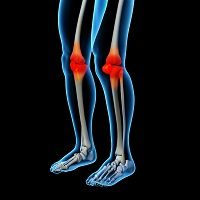Novel Knee Osteoarthritis Treatment for Obese Patients
A new gait training device has been shown to significantly improve clinical symptoms in obese patients with knee osteoarthritis (OA).

A new gait training device has been shown to significantly improve clinical symptoms in obese patients with knee osteoarthritis (OA).
Although there is no cure for OA there are treatments available to ease discomfort; however, patients who are overweight or obese face additional challenges when dealing with this condition. A team of researchers based in Israel believe that they have found a new, successful strategy for treating this group of patients.
“It is well established that obesity is strongly linked to knee OA and is considered a risk factor for both incidence and progression,” the authors wrote in the International Journal of Rheumatic Diseases.
Previous research indicated that knee OA and obesity were each “significantly associated with poorer physical function, with odds ratios of 4.3 and 1.7, respectively,” the study said. Furthermore, the odds ratio increased to 9.8 when both obesity and knee OA were present.
The biomechanical, home-based, gait training device was analyzed in 105 obese patients — 32 males and 73 females – with knee OA. Spatiotemporal parameters were measured using a computerized gait test. In addition, the participants filled out the Western Ontario and McMaster Osteoarthritis Index (WOMAC) questionnaire and Short Form-36 (SF-36) Health Survey. The subjects committed to the gait training device and exercise program for 12 months. Symptoms and progress were measured three months into the therapy as well as at the conclusion.
Each gait parameter showed improvement at both intervals with even better results surfacing at the latter. The researchers observed that at the three and 12-month marks, pain decreased by 34.7% and 45.7%, respectively. Functional limitation decreased as well by 35% and 44.7%. In addition, gait velocity increased by 11.8% and 16.1% and single limb support of the more symptomatic knee climbed by 2.5% and 3.6%. Data from the SF-36 showed improvement both physically and mentally.
“Obese subjects with knee OA who complied with a home-based exercise program using a biomechanical gait training device demonstrated a significant improvement in gait patterns and clinical symptoms after three months,” the report concluded, “followed by an additional improvement after 12 months.”